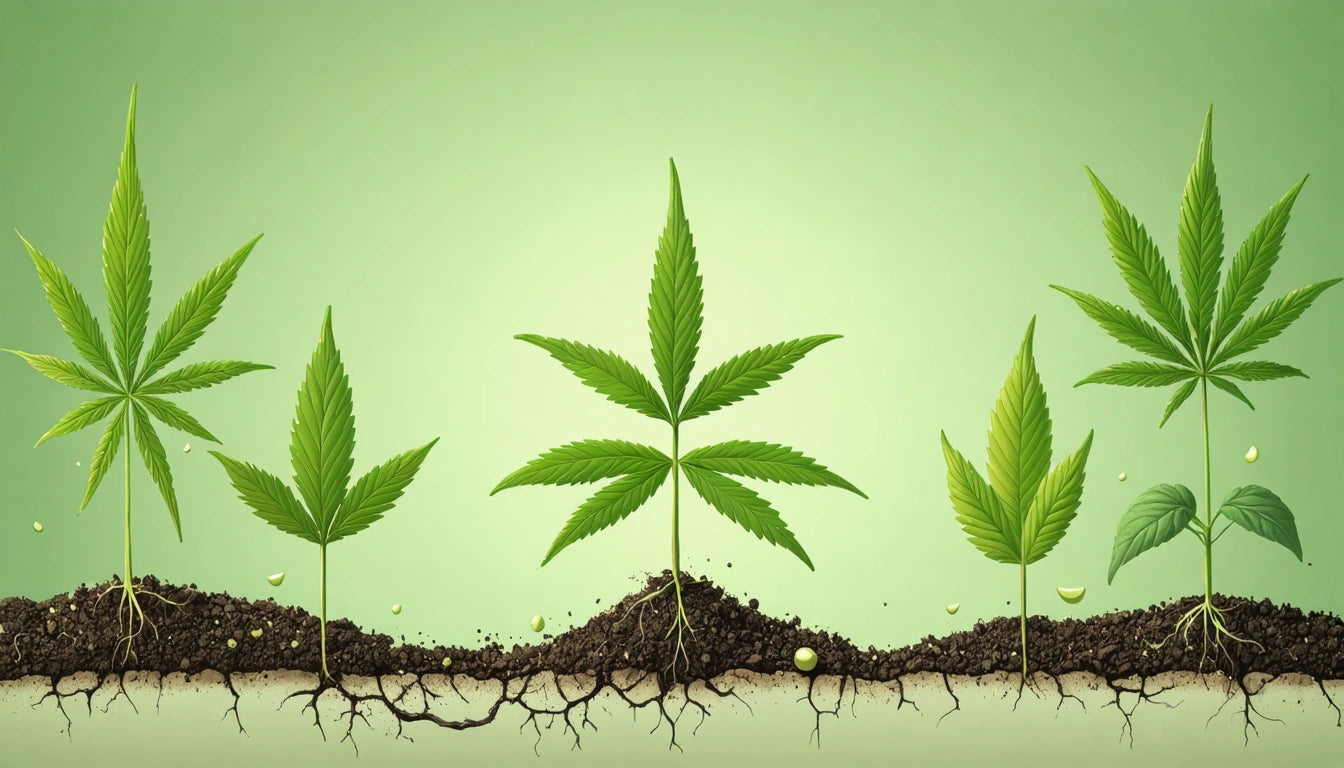Table of Contents
Understanding Betel Leaves and Nuts: Uses, Benefits, and More
Betel leaves and nuts have been integral to cultural practices and traditional medicine across South and Southeast Asia for thousands of years. These botanical elements are often confused or misunderstood by those unfamiliar with their traditional uses. This comprehensive guide explores what betel leaves and nuts are, their traditional applications, and the benefits of betel leaf that have sustained their popularity across generations.
What Are Betel Leaves: Origin and Botanical Characteristics
Betel leaves, known scientifically as Piper betle, come from a perennial vine belonging to the Piperaceae family, related to black pepper. The heart-shaped leaves are glossy, with a distinctive aromatic quality that varies slightly depending on the regional variety. Unlike sugar leaves in cannabis plants, betel leaves are cultivated specifically for direct consumption rather than as a byproduct.
The vine thrives in tropical climates with consistent rainfall and grows best in partial shade, often cultivated alongside supporting trees or structures. Mature plants can reach heights of 5-20 meters when properly supported, with leaves measuring 5-10 cm in length and width.
Regional Varieties and Characteristics
Different regions cultivate distinct varieties of betel leaf, each with unique flavor profiles:
- Magadhi (from Bihar, India): Mildly pungent with a hint of sweetness
- Bangla (from Bengal): Medium-sized with a strong, spicy flavor
- Banarasi (from Varanasi): Thick leaves with intense aroma
- Mysore (from South India): Smaller leaves with a delicate taste
Benefits of Betel Leaf in Traditional Medicine
The benefits of betel leaf have been documented in traditional medicine systems like Ayurveda for centuries. Modern research continues to investigate these traditional claims with scientific methodology.
Traditional Medicinal Applications
- Digestive Aid: Often chewed after meals to stimulate digestion
- Respiratory Support: Used in preparations for coughs and respiratory conditions
- Oral Health: Traditionally believed to strengthen gums and freshen breath
- Wound Healing: Applied topically for minor cuts and abrasions
- Anti-inflammatory: Used to reduce swelling in traditional treatments
The leaves contain essential oils, including eugenol, chavicol, and terpenes, which contribute to their aromatic quality and potential therapeutic properties. Much like how flower food ingredients preserve cut flowers, these compounds in betel leaves may contribute to their preservative qualities when used in traditional food wrapping.
What Are Betel Nuts: Composition and Properties
Betel nuts, or areca nuts, are the seeds of the Areca catechu palm tree, not actually nuts in the botanical sense. These seeds are harvested from the palm's fruit and are typically dried before use. Their composition includes alkaloids (primarily arecoline), tannins, and various other compounds that contribute to their stimulant effects.
The nuts vary in size and appearance depending on maturity when harvested:
- Young nuts: Softer texture with milder flavor
- Mature nuts: Harder, more fibrous with stronger effects
- Processed varieties: Often sliced, boiled, or fermented for different uses
When considering proper storage for these botanical products, specialized packaging solutions similar to those used for storing herbal products in protective mylar bags can help maintain their aromatic qualities and extend shelf life.
Highlight: Betel leaves and nuts have been used together in traditional "paan" preparations for over 2,000 years across South and Southeast Asia, serving both cultural and medicinal purposes.
Cultural Significance and Traditional Practices
The cultural importance of betel leaves and nuts extends beyond their physical properties. In many Asian societies, they play a central role in social customs, religious ceremonies, and hospitality rituals.
Paan Preparation and Variations
The most common preparation involving both betel leaf and nut is paan, which varies regionally:
- Sweet Paan: Contains sweeteners, coconut, rose preserves, and other confectionery ingredients
- Saada Paan: A simpler preparation with lime paste, catechu, and spices
- Meetha Paan: Dessert variation with fruits, sweet syrups, and sometimes chocolate
- Tobacco Paan: Includes tobacco (increasingly discouraged due to health concerns)
Understanding the cultural context of these preparations is similar to recognizing how seeds play vital roles in different plant life cycles – both represent fundamental elements that carry cultural and biological significance.
Health Considerations and Modern Research
While traditional uses highlight the benefits of betel leaf, contemporary research presents a more nuanced picture, particularly regarding betel nuts:
Betel Leaf Research
Recent studies have investigated potential antimicrobial, antioxidant, and anti-inflammatory properties of betel leaf extracts. Some research suggests compounds in the leaves may have applications in modern medicine, though more clinical trials are needed.
Betel Nut Concerns
Health organizations have raised concerns about habitual betel nut use, particularly when combined with tobacco. The World Health Organization classifies areca nut as carcinogenic, linking long-term use to increased risk of oral and esophageal cancers.
This health dichotomy between the leaf and nut parallels how certain insects can be either beneficial or harmful to plants, as seen with leafhoppers that can damage certain plant species while being harmless to others.
Sustainable Harvesting and Preservation Practices
As with many traditional botanical resources, sustainability concerns have emerged regarding betel cultivation. Traditional farming methods often incorporate principles similar to companion planting techniques, where betel vines grow alongside supporting trees in mutually beneficial arrangements.
Modern cultivation is increasingly focused on:
- Organic farming methods that avoid chemical pesticides
- Agroforestry approaches that maintain biodiversity
- Water conservation techniques appropriate for changing climate conditions
- Fair trade practices that support traditional growers
The preservation of traditional knowledge about betel cultivation represents an important aspect of cultural heritage conservation, ensuring these practices continue for future generations while adapting to contemporary environmental and health understandings.











Leave a comment
All comments are moderated before being published.
This site is protected by hCaptcha and the hCaptcha Privacy Policy and Terms of Service apply.